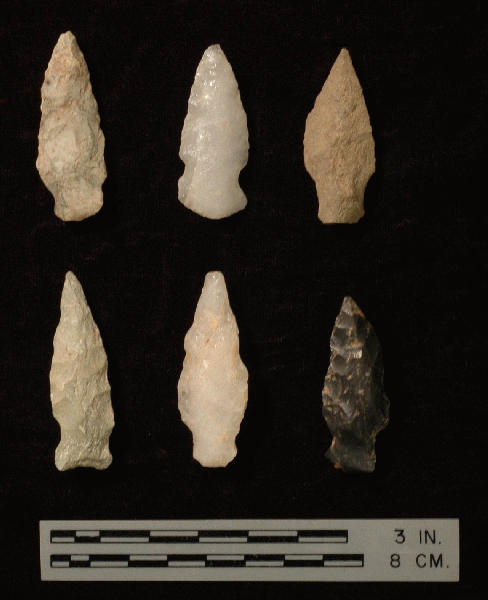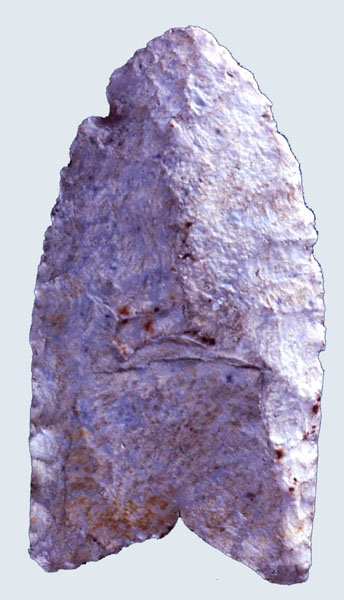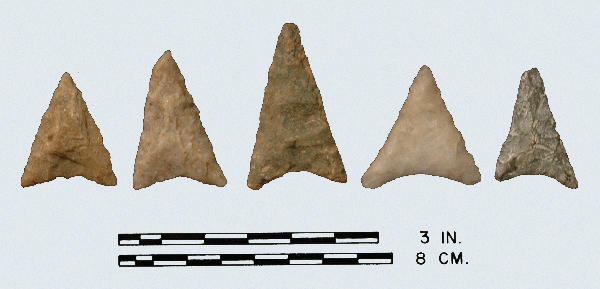
Lamoka: Top Row: rhyolite, quartz, quartzite; Bottom Row: tuff, quartz, chert.
Type Side Notched Late-Archaic
Defining Attributes
The Lamoka is a small, narrow, thick point, with weak to moderately pronounced side notches, or straight stemmed with slight, usually sloping shoulders.
Chronology
The Lamoka point dates to the Late Archaic period, 2500 to 1500 BCE. Ritchie (1971) explains that the Lamoka point is the characteristic point form of the Lamoka complex in central and western New York, for which radiocarbon dates ranging from about 3500 to 2500 BCE have been obtained.
Description
- Blade: The blade is triangular and biconvex or median ridged in cross section. The edges are straight or slightly excurvate.
- Base: The base may be straight, oblique, or slightly convex. The base is usually un-worked and as thick as the blade, often exhibiting broad, unmodified surface of flake or pebble from which the point was made. This thick, “unfinished” condition of the base is a prime diagnostic feature of the Lamoka point wherever found. The stem may be straight and of moderate length or side notched.
- Size: Length ranges from 20 to 70 mm. Width ranges from 10 to 24 mm. Thickness measures 6 to 12 mm.
- Technique of manufacture: Crudely made by soft percussion and little or no pressure retouch.
Discussion
This type has a wide range beyond the known area of the defined Lamoka complex in central and western New York and adjacent northern portions of Pennsylvania. Lamoka points are found throughout Virginia. At the Slade Site along the Nottoway River in Virginia, McAvoy (1997) recovered Lamoka points in a Late Archaic context of ca. 2500 BCE.
Defined in Literature
This type was originally defined by Ritchie (1961 revised 1971) based on points recovered from the Lamoka Lake site in New York.
References

